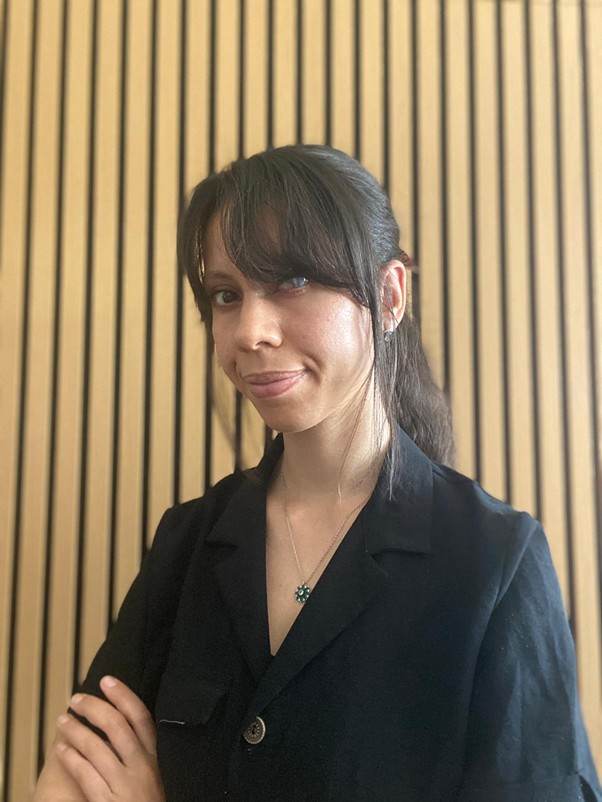Doctoral Candidate – no. 6
Kenza Amhis
I’m excited to contribute to the wind energy world, because it allows me to practice my passion for research, aerodynamics, aeroacoustics and smart digital solutions while contributing to a moral purpose.

Doctoral Candidate – no. 6
Digital controls for noise mitigation
Scope and Objectives
To satisfy noise emission constraints in populated areas, wind turbines are typically curtailed, i.e. operated at reduced rotor speed. When wind turbines operate in this quiet mode, they produce less power, which in turn can decrease the economic profitability of the park.
Today, quiet operation is simply triggered based on the time of the day (for example, at night time). This ESR project will develop novel digital controls to mitigate noise emissions, improving on today’s simple on-off quiet mode. Instead of time of the day, the new controller will consider the current ambient conditions, which will be detected in real-time based on SCADA operational data.
Based on the detected ambient conditions, noise emissions will be estimated for the individual turbines in the park, together with the directivity of the emissions and the noise levels around the park. Based on these predictions, power and yaw misalignment setpoints will be computed for the individual turbines to maximise power output, while satisfying noise levels at points of interest.
This constrained optimisation problem will use the TUM AI-enabled park flow model, using also the suite of noise emission tools developed at TUM. This large-scale optimisation problem will be solved offline, producing ambient-condition-dependent turbine setpoints, which are then interpolated at run-time based on current conditions.
The new noise-abating wind farm control method will be integrated with a standard power maximisation wind park controller, to obtain the ability to smoothly transition between standard and quiet operational modes.
The novel controller will be showcased on onshore wind farms in close proximity to inhabited areas. Performance of the new control logic will be quantified in terms of relevant metrics (yield, satisfaction of noise constraints…).
Expected Results
The fellow will develop a framework for the design of noise-abating wind farm control laws. It is expected that, using these new procedures, it will be possible to satisfy noise emission constraints while at the same time significantly improving yield compared to today’s simple quiet-mode on-off approach.
It is expected that an improved yield will be obtained by better distributing noise emissions throughout the farm, for example by boosting power through wake steering at turbines that are farther away or contribute less to noise (because of directivity). Similarly, it is expected that a smaller number of turbines will have to be curtailed.
The fellow will acquire a broad knowledge on large-scale optimisation, digital controls, noise modelling, flow modelling.
Planned secondments
Academic secondment at UNIZAR (Prof. Julio J. Melero, M24-M26) for work on noise and environmental constraints on the development of onshore wind parks. Industrial secondment at ENGIE Laborelec (Ariane Frere M35-M37): building on ENGIE’s experience with focus on the seamless integration of noise mitigation with other wind turbine and farm operational modes.
Develop your career
Don’t miss this opportunity to pursue your passion and make a meaningful contribution
Doctoral Candidate
Kenza Amhis
- kenza.amhis@tum.de
Supervisor
Prof. Carlo L. Bottasso
- carlo.bottasso@tum.de

TUM
